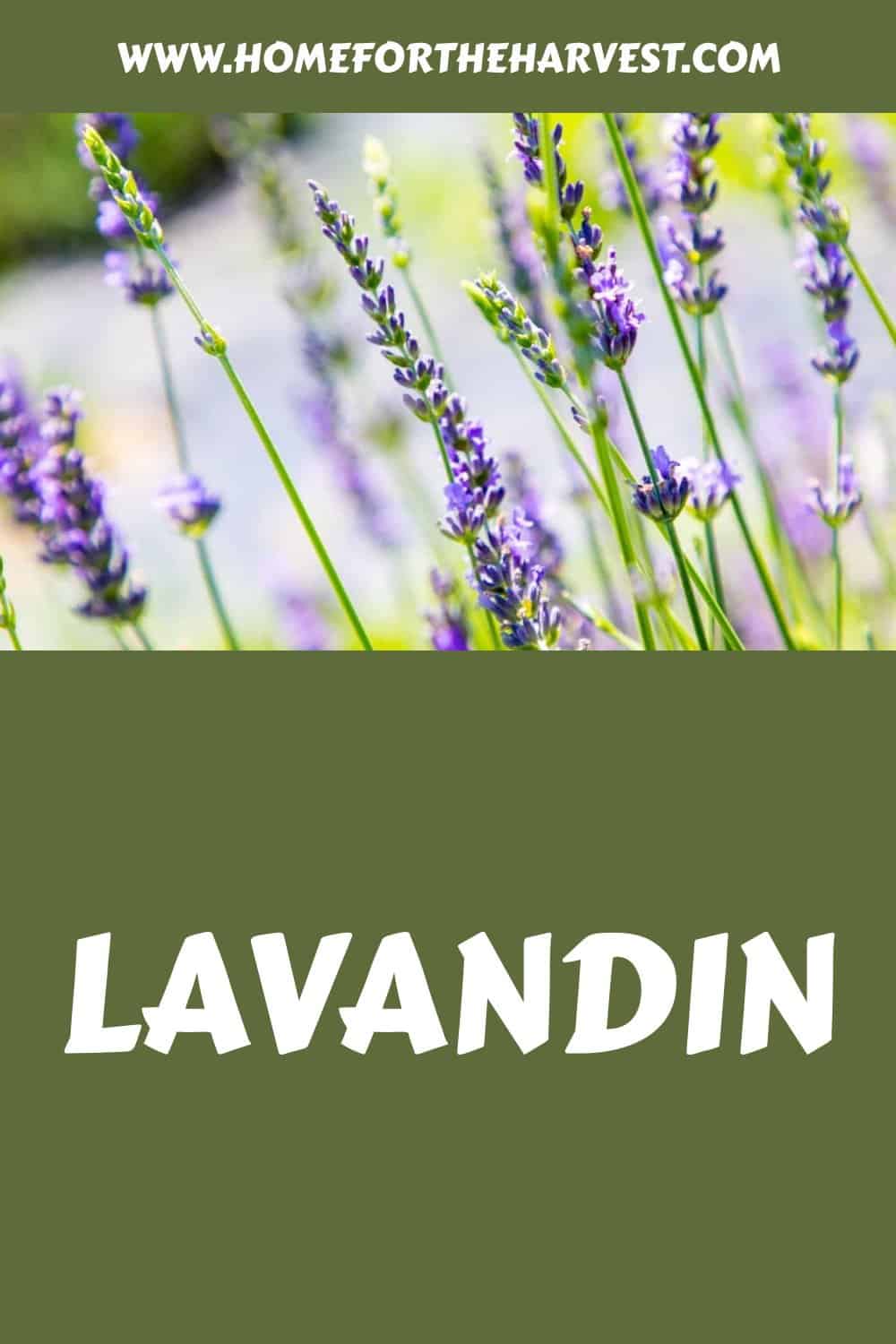Wondering what Lavandin is and how it differs from other types of lavender? Or why these plants are so popular?
Lavandin is a type of lavender with elegant long stems and a strong lavender scent. These hybrid plants are most commonly used for ornamental or fragrant purposes, including as landscape hedge plants or harvested for use in fresh bouquets, lavender bags, dried arrangements, scented crafts, or pressed to make lavender essential oils. The plants are also known for their tolerance to a wide range of climates. All Lavandin varieties are sterile crosses of English Lavender and Portuguese Lavender. The most popular Lavandin variety is Grosso Lavandin.
Read on to learn all about Lavandin!
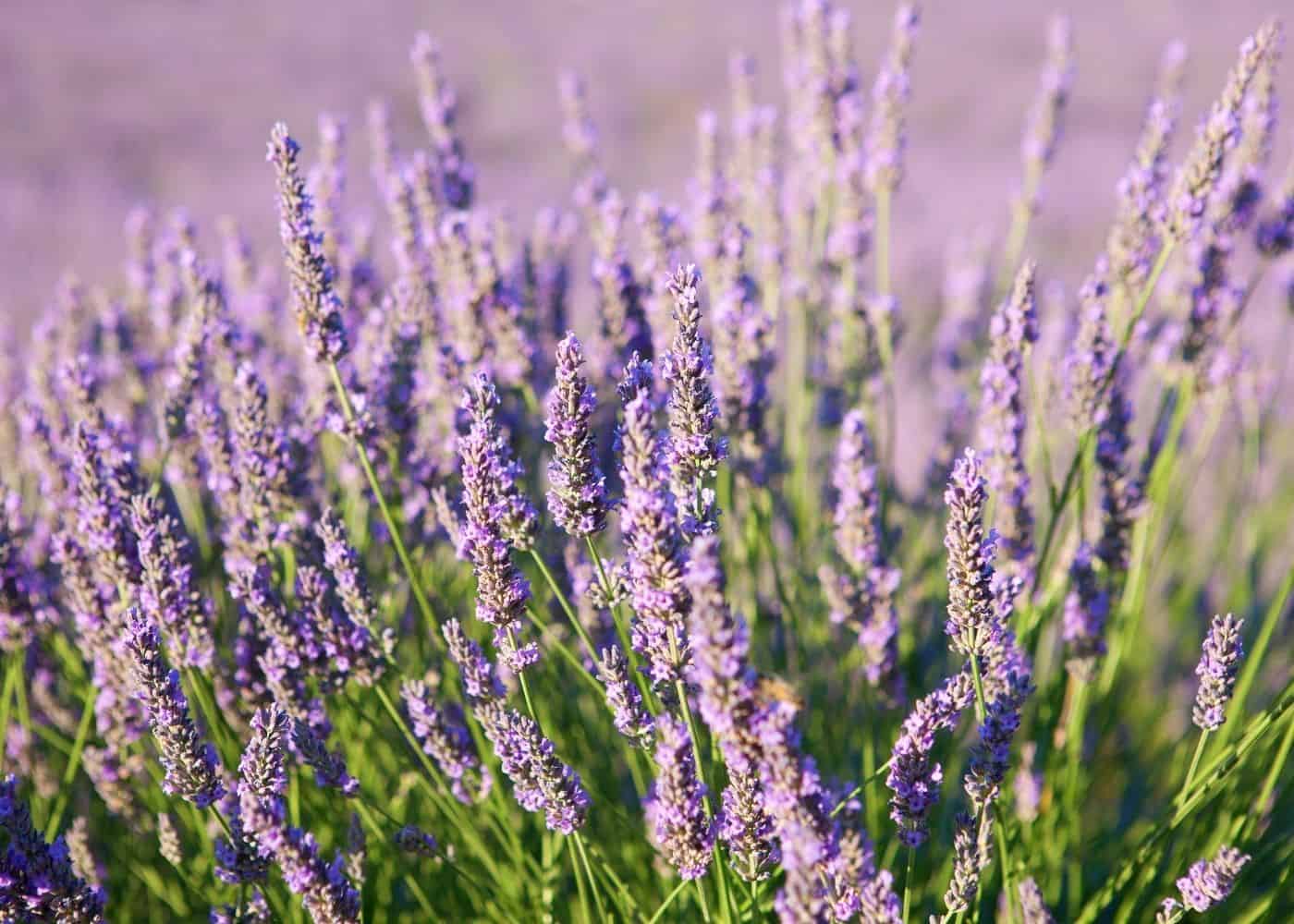
Lavandin basics
Lavandin is a hybrid type of lavender known for its strong fragrance and long flower spikes. Lavandin (Lavandula x intermedia) results from crossing English Lavender (Lavandula angustifolia) and Portuguese Lavender (Lavandula latifolia). Lavandin is known for its long graceful flower stems and the wide range of growing climates the plants thrive in. Lavandin is particularly known for having the cold tolerance of English Lavender plus the heat and high humidity tolerance of Portuguese Lavender. Lavandin can be grown in hardiness Zone 5-9.
Like other types of lavender, Lavandin grows best in full sun areas with good drainage and is drought-tolerant once established. Most varieties have a lilac purple lavender bloom color, but there are some slightly pink varieties, several violet-blue types, popular white varieties, and quite a few dark purple flower varieties.
New varieties of Lavandin can be created naturally by pollinators or bred by lavender farmers. Natural hybridization occurs when bees move pollen from high-altitude English Lavender plants to lower-altitude Portuguese Lavender plants and the resulting flower seeds germinate successfully. Breeding of Lavandin is done by hand in a similar manner. Once a new variety has been hybridized, it can only be propagated by root division or from cuttings as the seeds are sterile.
While Lavandin was popularized in France, it is not the same as or bred from “French Lavender” (Lavandula dentata). Lavandin is a cross of English Lavender (Lavandula angustifolia) and Portuguese Lavender (Lavandula latifolia). Read more about different types of lavender
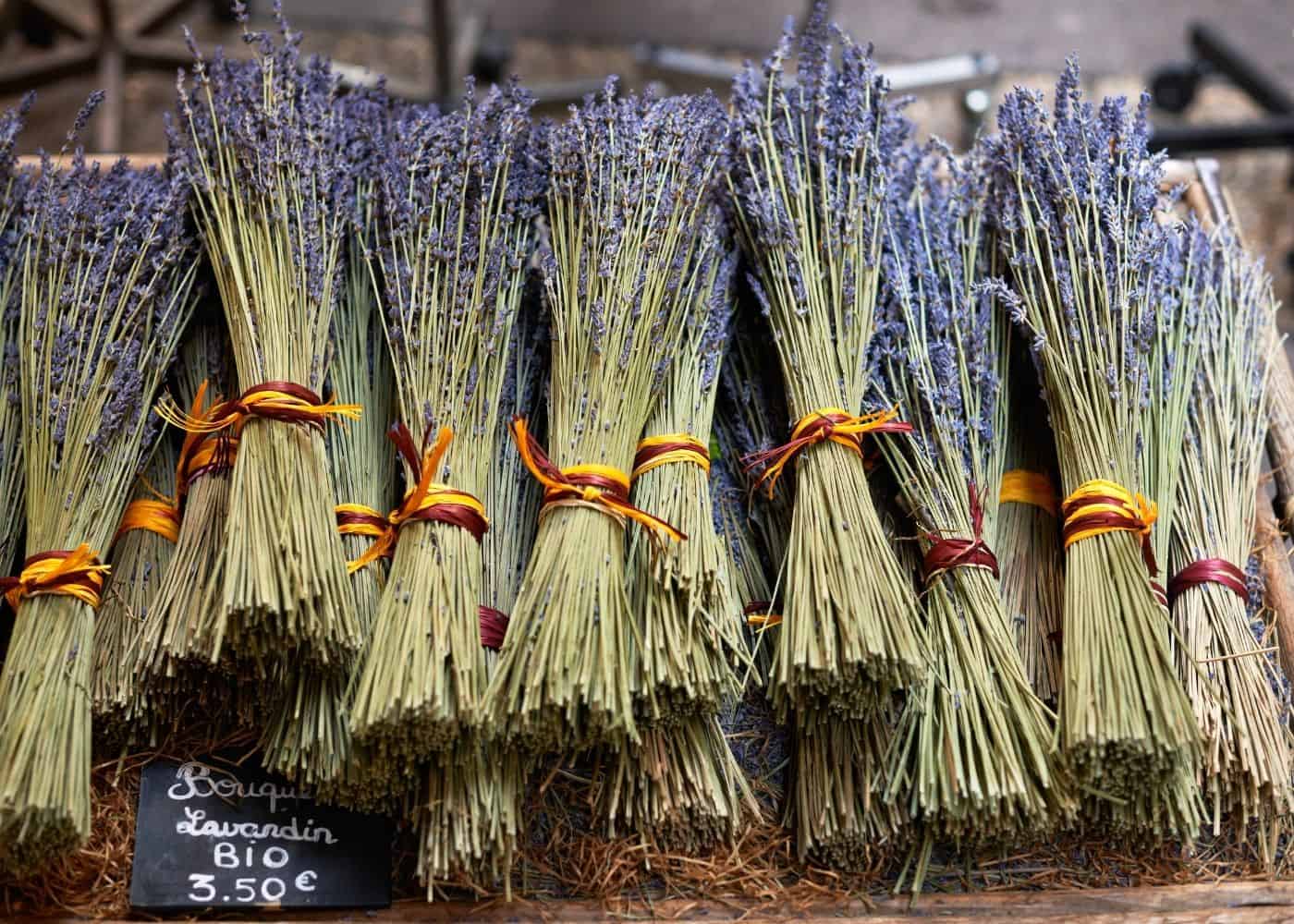
Uses for Lavandin plants & flowers
Lavandin is commonly used in landscaping as a feature plant or in mass plantings like hedges. The flowers are harvested for either ornamental or scented purposes. Most lavender grown for cut flower bouquets comes from Lavandin plants because they are such reliable producers and the spikes have long stems. Lavandin flower spikes also dry well and are popular in scented crafts like lavender wands, dried arrangements, lavender soap, scented satchels, and potpourri. Lavandin Grosso and Lavandin Gros Bleu are the most popular floral varieties.
Lastly, Lavandin is commonly farmed to produce Lavandin essential oils. While the highest-quality lavender essential oil is made from English Lavender (Lavandula angustifolia), the oil from Lavandin (which has English Lavender as one parent) is also considered to be high quality. The invigorating scent of Lavandin is slightly less sweet than that of English Lavender, but the plants are much more productive and less fussy to grow. A single Lavandin plant can produce up to 10 times as much essential oils as an English Lavender plant! Common hybrid lavender varieties favored by distillers include Lavandin Provence and Lavandin Super.
Lavandin oil has a sharper herb scent when compared to the sweet floral scent of oil pressed from English Lavender (Lavandula angustifolia). Essential oils made from Lavandin typically contains greater percentages of Camphor and Linalool (and sometimes Linalyl Acetate) than English Lavender. These higher percentages (especially the higher Camphor content) likely come from Lavandin’s other parent species of lavender, Portuguese Lavender (also called Spike Lavender).
Lavandin oil is usually sold at a discount to a few drops of essential oils made from English Lavender. English Lavender-derived oil is sometimes labeled as being made from “true lavenders” (although Lavandin is just a different type of lavender in the genus Lavandula). The lower price of Lavandin-sourced oil and the strong fragrance makes it popular for mass-produced detergents, soaps, and other household and natural products. It is also very popular in the aromatherapy industry to add spicy sharp tones.
“Lavender essential oil can be made from all species of the plant, but the most commonly used varieties are Spike lavender (Lavandula latifolia) and English lavender (Lavandula angustifolia).”
Lavender: Growing & Using Lavender for Fragrance, Mood & Body Care, by Jessie Hawkins
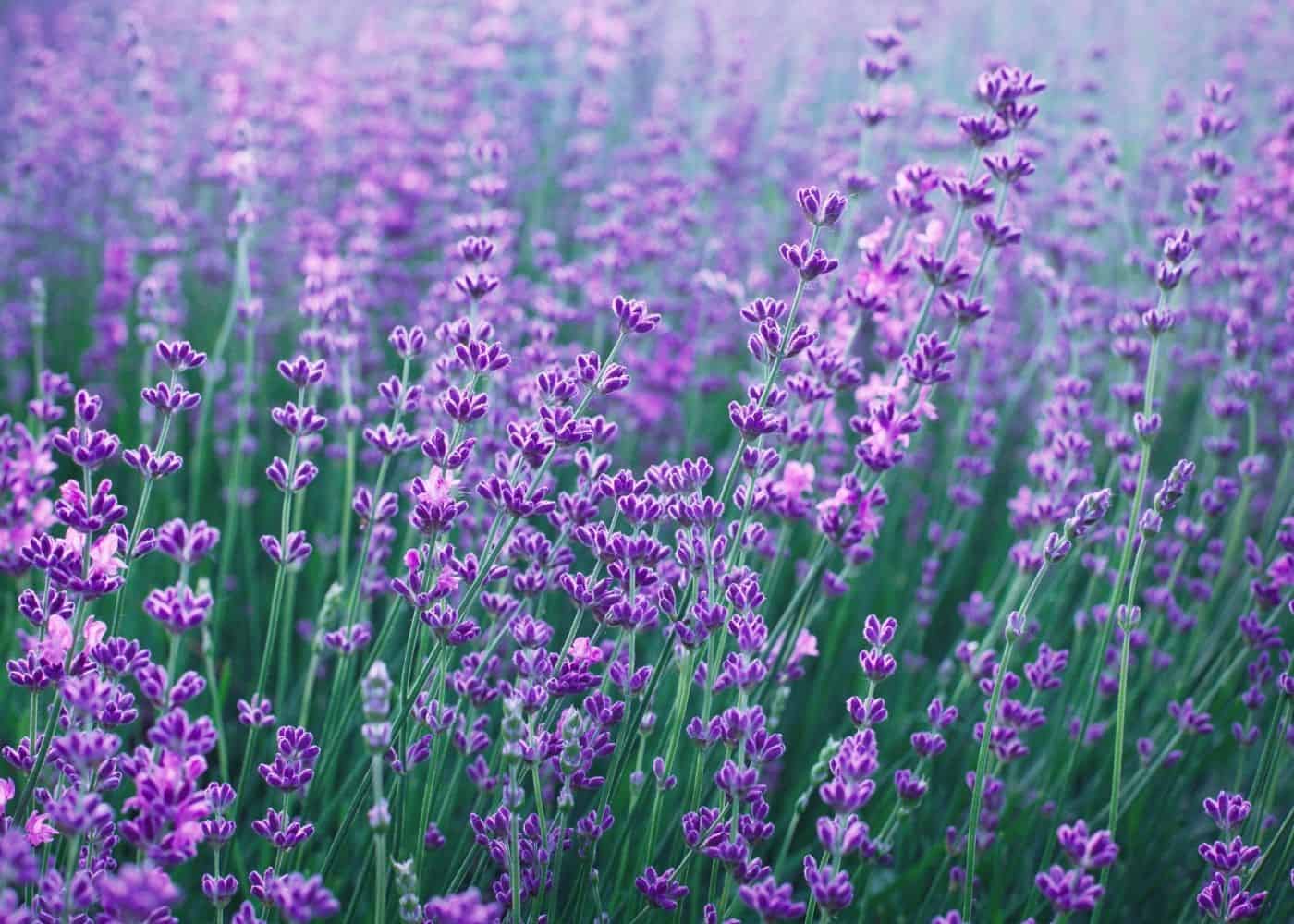
Popular lavender varieties of Lavandin
Here are some of the most popular Lavandin lavender varieties:
- Grosso Lavender – very popular among lavender farmers and garden designers
- Provence Lavender – large variety with flowers containing high-quality lavender oil
- Hidcote Giant Lavender – early blooming variety with large flower spikes and long stems
- Gros Bleu Lavender – newer ornamental variety with long flower heads for bouquets
- Super Lavender – large French variety with light violet-blue flowers
- Abrialii Lavender – popular heirloom variety grown commonly in France
- Grappenhall Lavender – large, dense lavandin variety with lighter purple-blue flowers
- Fred Boutin Lavender – large bushy variety with grey foliage, popular for hedges
- Dutch Lavender – large bushy plant with grey-green foliage
- Seal Lavender – very large lavandin variety with bushy form and very fragrant flowers
- Alba Lavender – white blooming heirloom lavandin variety (larger than L. angustifolia ‘Alba’)
- Bogong Lavender – very large lavandin with uniform spikes
- Impress Purple Lavender – large lavandin variety with dark flowers
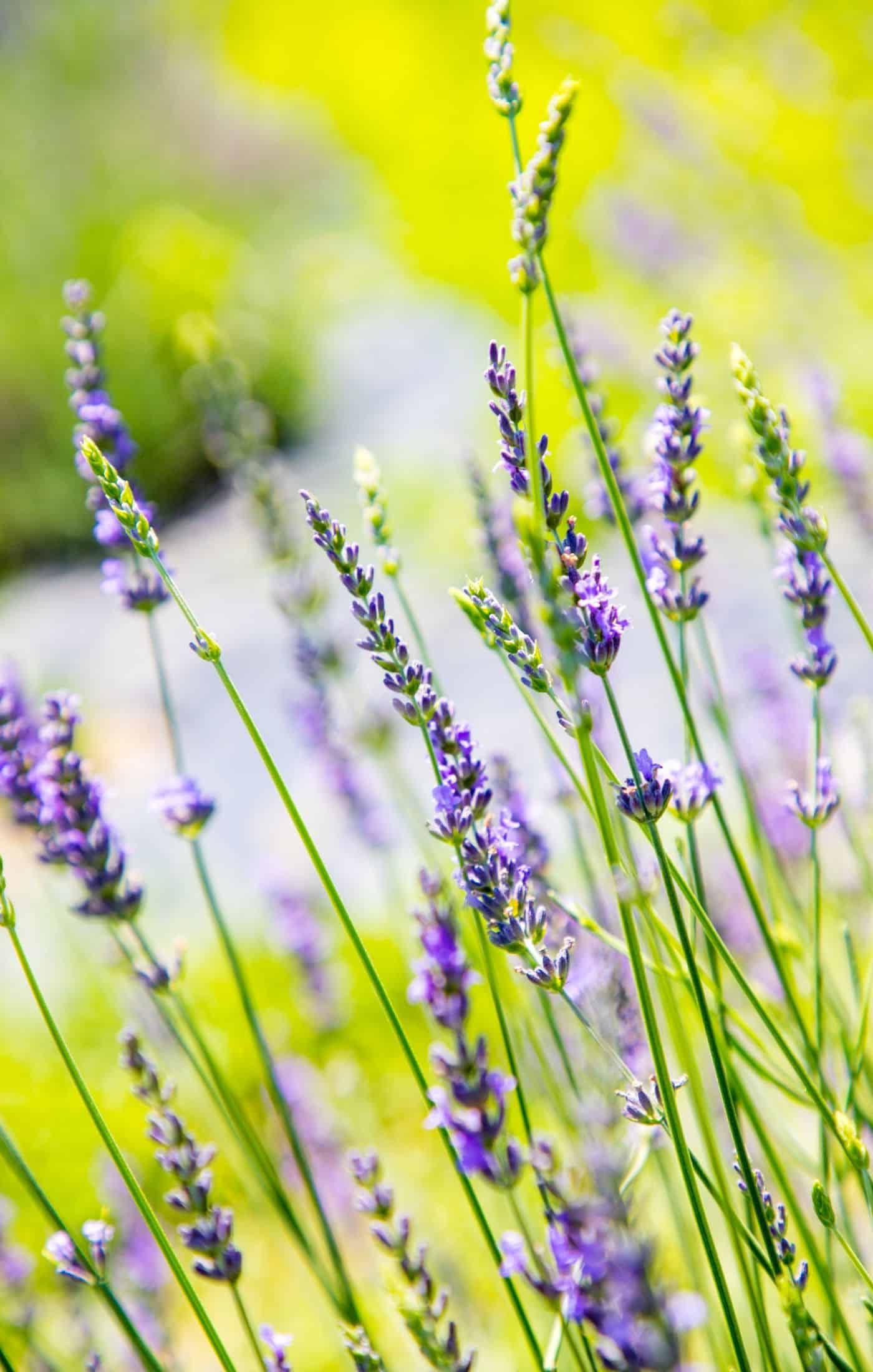
Lavandin flowers
The flower head shape of Lavandin plants typically resembles those of English Lavender. Lavandin plants typically grow very long stems for their flower spikes, making Lavandins taller in the garden than traditional English Lavender when in flower.
Lavandin flowers about 2-4 weeks after English Lavender (but before Portuguese Lavender). Most types of Lavandin have a strong lavender aroma.
“These cultivars have long penduncles and strong fragrance, wihch make many of them ideal for fragrant crafts, fresh or dried flowers, and oil production.”
Lavender: The Growers Guide, by Virginia McNaughton
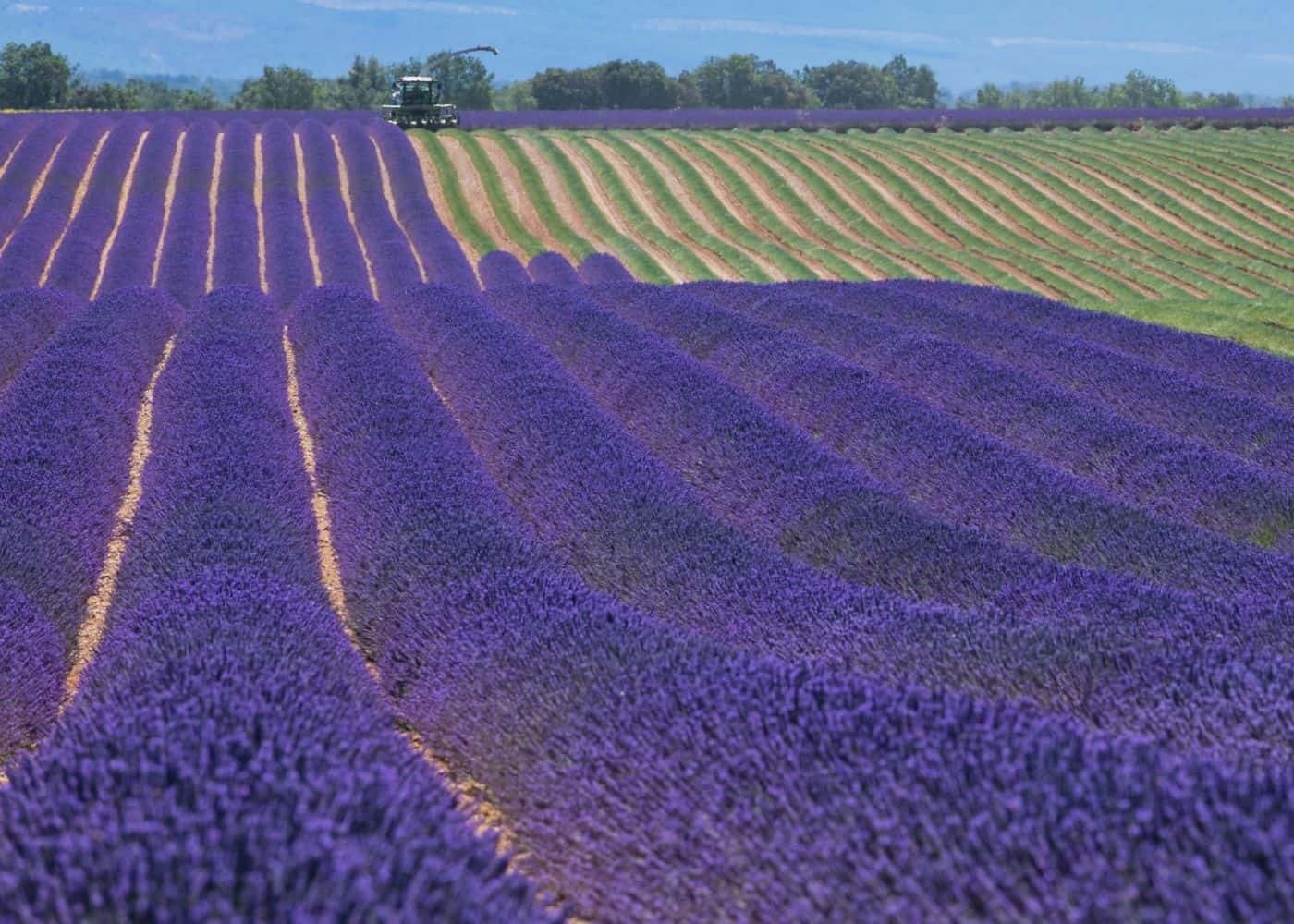
Where to plant Lavandin?
Lavandin can be grown in zones 5-9. Plants grown in the coldest winter temperature zones may require extra winter care. This can include mulching the plants after the ground freezes or adding protective winter covers to keep the plants insulated and prevented from too many harsh freeze/thaw cycles.
Lavandin grows best in sunny planting locations with well-drained sandy soil reminiscent of the Mediterranean region. The plant should receive at least 6-8 hours of sunlight per day. Well-drained soil like sandy loam at the planting site allows excess water to pass through to avoid excessive moisture. Avoid planting Lavender anywhere water tends to pool after rainfall. If you must plant in clay soil, amend the soil with organic compost, peat, and/or coconut coir to create a lighter drier mix.
Lavandin grows best in a neutral to alkaline soil pH. Lavender is a Mediterranean plant that grows best in limestone-derived soil. Overly acidic soil should be amended with some dolomite lime prior to planting and potentially once each year.
How to plant Lavandin
Lavandin is best planted in early spring or in the fall. Transplanting woody perennials like lavender is usually most successful when done early in the morning, on a cloudy day or when the planting area is otherwise shielded from harsh direct sunlight. Planting outside of the proper planting time may stress the plant and delay the growth of the roots into the surrounding soil.
Here are the basic steps for planting Lavandin:
- Dig a hole for the plant’s root ball. The hole should be about twice as wide as the pot the plant was sold in, but no deeper than the potting soil inside the planter. Pour some water into the hole and watch to ensure the water drains down easily into the soil.
- Pull the Lavandin plant out of the nursery pot. Take a look at the roots, if not too many roots are visible on the outside of the root ball, it can go straight into the planting hole. If, however, there are thick white roots circling around the root ball (particularly at the bottom), you may wish to gently loosen the root ball and coax the thicker roots out of the circular pattern and into more of an outwards direction.
- Backfill the planting hole gently around the sides of the Lavender plant’s root ball. Use the soil that came out of the hole to backfill it, gently tamping it down as you go. If your soil is nutrient poor, you may wish to mix an organic transplanting fertilizer into the soil used to backfill the planting hole.
- Apply a ~1″ thick layer of compost as an organic mulch over the surface of the soil to keep weeds down, buffer soil from temperature swings, and provide a natural source of slow-release plant nutrients.
- Water the newly-planted Lavandin thoroughly after planting.
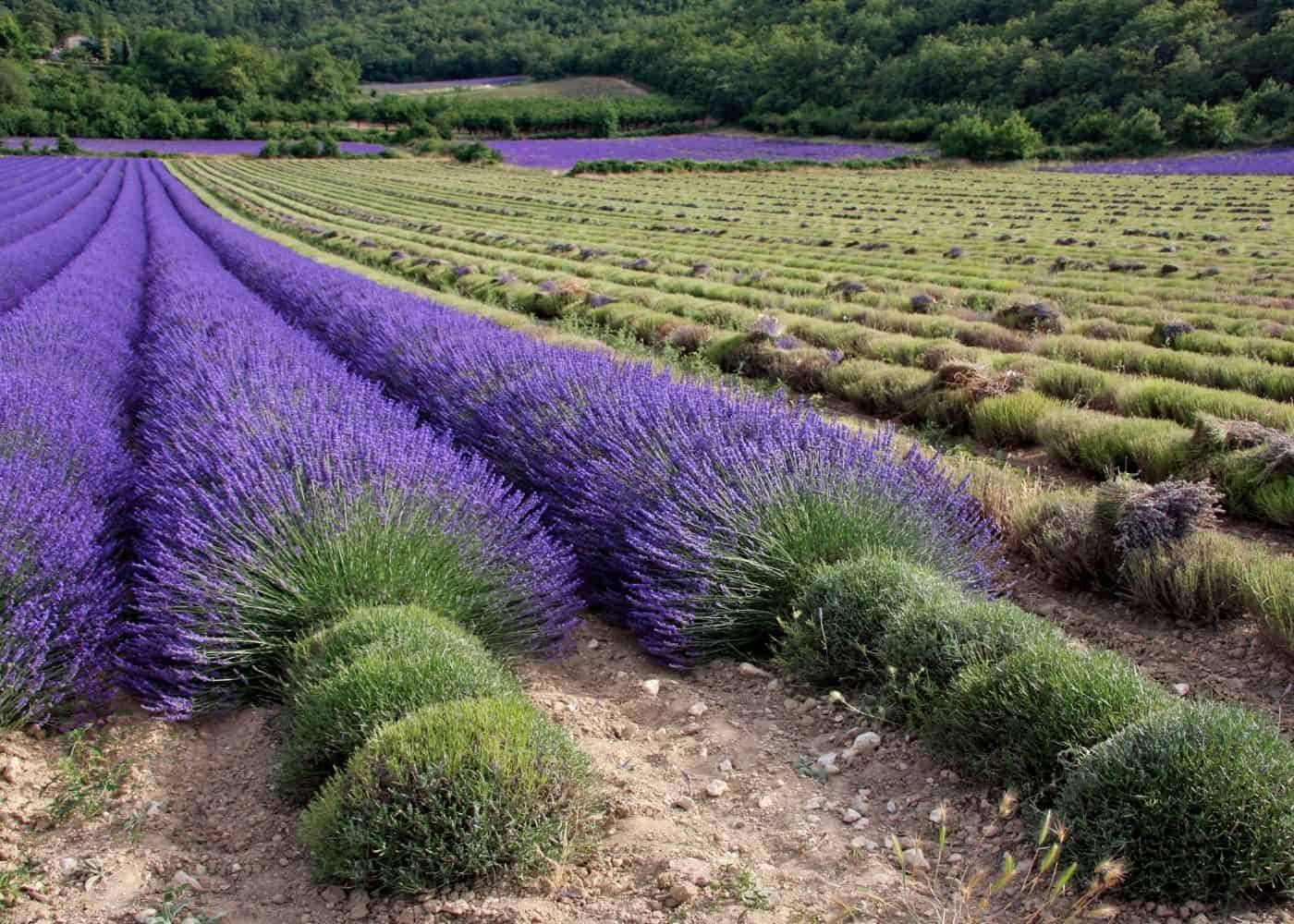
How to grow & care for Lavandin
Lavandin is a relatively low-maintenance plant to grow and care for. The first year involves the most maintenance, as the plant should be watered frequently to help the roots become established. Caring for Lavandin is much easier in subsequent years once the plant is tolerant of drought conditions.
Watering Lavandin
Lavandin is tolerant of dry soil once established in the landscape, but it does take a year or two for the roots to grow. Check soil moisture levels regularly for a year after planting and water whenever the top inch of soil dries out.
Watering may be infrequent in moist spring/fall weather, but the plants may require irrigation several times a week during heatwaves or dry summer weather. Watering right at the soil level (such as with drip irrigation) is preferable to overhead watering as moistening leaves regularly can lead to fungal disease. Diseases can be more of a problem in wet climates with high humidity.
Once the plants have well-established perennial roots in the surrounding soil, Lavandin is tolerant of dry soil and the plants don’t need regular watering in most conditions. Don’t overwater established plants as overly damp soil can stress the plant and potentially lead to root rot if the soil is poorly drained. Limit supplemental watering except in overly arid climates.
Fertilizing Lavandin
Lavandin plants may need to be fed with an organic fertilizer when the soil is nutrient-deficient. Lavender plants can be fed with fertilizer in the spring after the plants break winter dormancy and again in late summer after flowering has finished.
Timing fertilizing will depend on the USDA planting zone number, with cooler climates waiting for the ground to thaw prior to fertilizing plants and warm winter areas fertilizing as early as late winter. Follow the instructions on the specific fertilizer product for application details.
Pruning Lavandin
Lavandin plants require annual pruning for best results. Hybrid Lavender is most commonly pruned down to mounds in the late summer after the plant flowers. This annual pruning is generally quite significant on mature plants, removing 1/3 to 1/2 of the foliage. For instance, if most stems with leaves are about 30″ long, they can be cut back to 15″-20″ long each to create the mounded spherical shape. Here is a detailed article all about when to cut back lavender. This pruning applies to Lavandin grown to be harvested, for ornamental landscaping purposes, and in containers (such as lavender trees).
Lavandin plants can also be lightly sheared along the sides in the early spring if planted in a hedge. Spring is also a good time to prune off any stems that died during the winter. Also take the opportunity to remove any stems that appear to be dying, diseased, or damaged. These stems can be removed right down to the base of the plant.
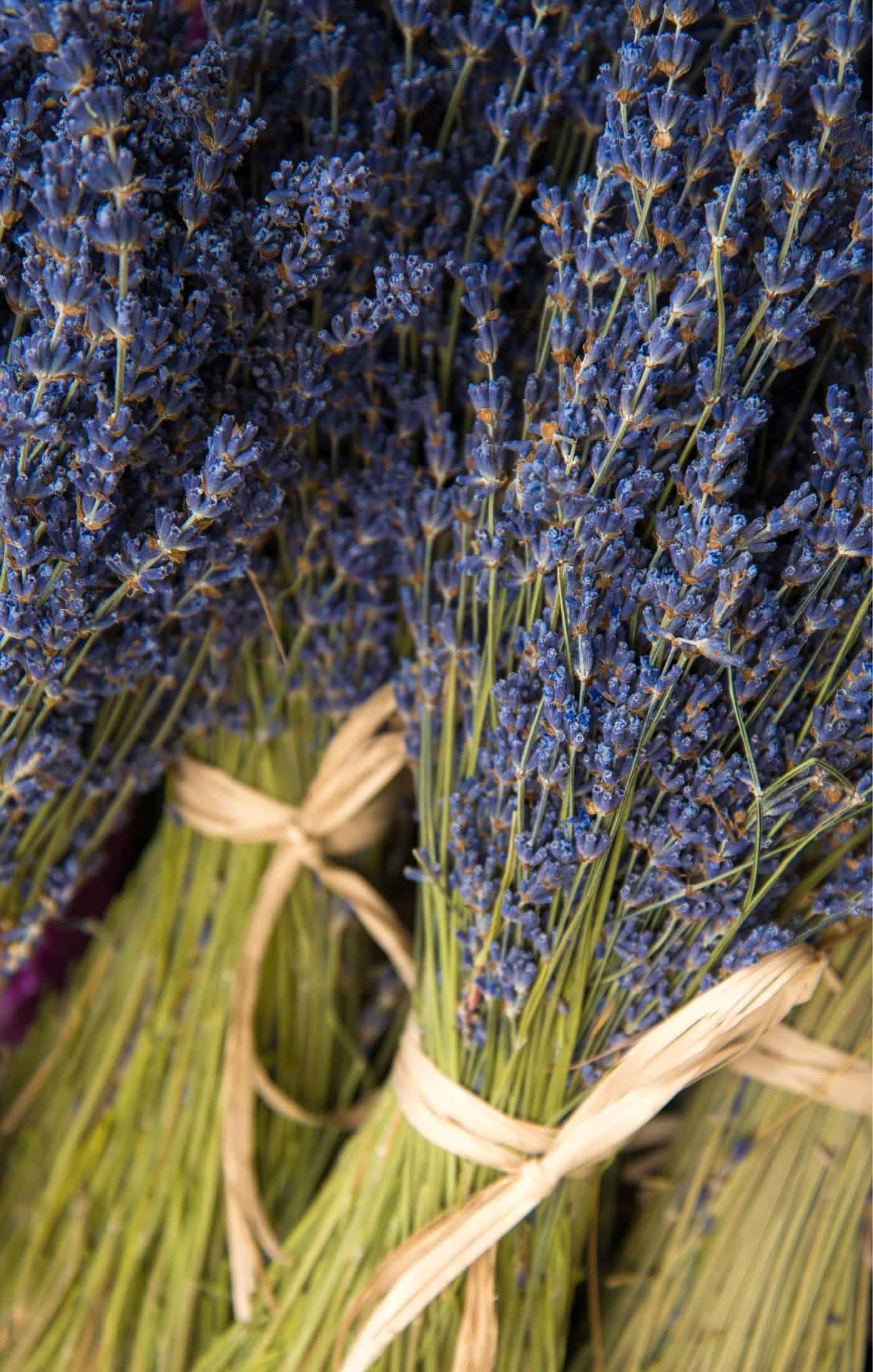
Harvesting Lavandin
Lavandin is typically harvested in early summer as the first flowers start to bloom on the plant. Harvested flowers can be used in fresh bouquets or dried for fragrant crafts. The scent of Lavandin flowers tends to become sweeter and more like the scent of English Lavender if the flowers are left to bloom on the plant. Lavandins used for scented sachets or sweet potpourri are usually allowed to flower on the plant until most flowers have dried.
When to harvest Lavandin
Timing the lavender harvest depends upon how the lavender will be used. Most gardeners try to harvest Lavandin as the first flowers on the spike open, as the flower spikes will have the longest vase life and strongest fragrance as cut flowers when harvested early. Lavandin left to flower on the plant will have a sweeter but weaker scent. The dried lavender flowers tend to fall off the stalk when the flowers bloom on the plant, so these stalks are usually used for loose dried crafts.
How to harvest Lavandin
Harvest your Lavandin flower stems in the morning. Wait until the morning dew has dried but try to harvest the flowers before the heat of the day becomes too intense. Use a clean, sharp pair of scissors or pruning shears to cut each stem off the plant. You can remove the stem down to half its height. For instance, a flower stem that stretches 30″ from ground level to the tip of the flower spike can be cut to 15″ long in most cases.
Using Lavandin
Lavandin is well suited to use in floral arrangements, natural cleaning products, potpourri, scented sachets, lavender wands, perfume, and other fragrant crafts. To dry Lavender, either hang the flower spikes or lay them flat to dry in a warm location with good air circulation. Lavandin is also very well suited to essential oil production.
Common plant diseases affecting Lavandin
While Lavandins are generally quite hardy, there are several fungal, bacterial, and viral diseases that can affect them. Fortunately, these plants are naturally resistant to the Lavender disease Mycoplasm Yellow Decline.
More common fungal diseases like leaf spot fungi (Septoria lavandulae) and root rot caused by Phytophthora mold can affect Lavandin. This generally happens in areas with high rainfall and/or frequent overhead watering. Root rot typically also occurs where the soil does not drain out excess water. Take care to ensure soil is draining well and that air is circulating around the base of the plant.
Disease is most common in rainy, humid climates. Lavender in these climates should ideally be planted in soil with excellent drainage if possible and in open areas with good air circulation.
Common garden pests affecting Lavandin
Lavandin plants are sometimes attacked by garden pests such as Spittle Bugs, Mealy Bugs, and Aphids. These bugs can generally be sprayed off the plant with a sharp stream of water but may require an organic pesticide spray once the pests have become established.
Lavandin is rarely attacked by mammals due to its strong scent. Deer generally avoid Lavender completely, especially if the plant has flowers on it. Young plants may be attacked by rabbits and other smaller burrowing mammals. Rabbits tend to dig around the roots rather than attacking the foliage or flowers.


